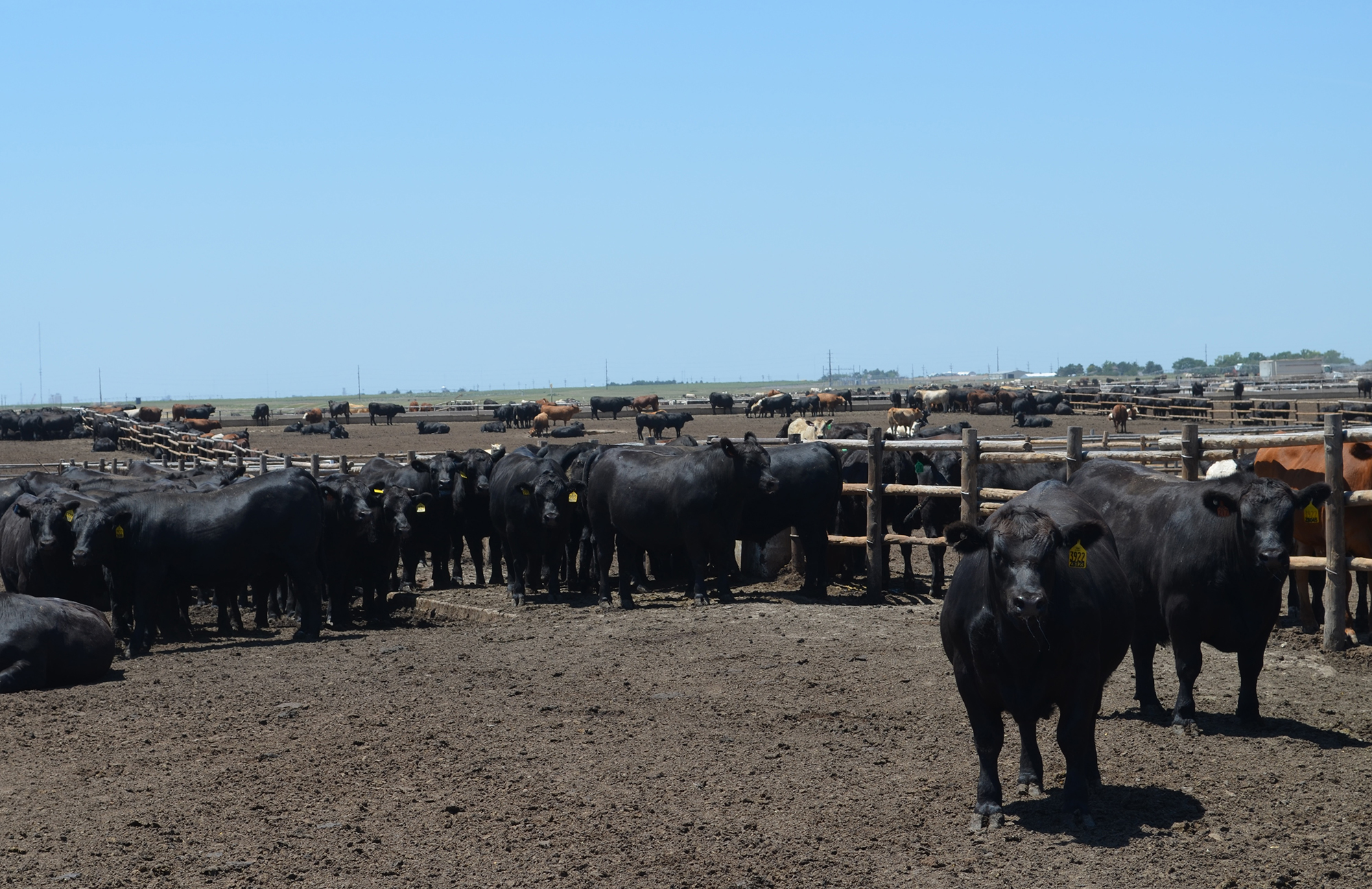
On-target at Pratt
by Lyndee Stabel
November 21, 2011
Of all the words that could describe Pratt Feeders, “quality” best fits the staff, the cattle they feed and the way they feed them. Over the past year, the south-central Kansas yard has ramped up its connection with the “Q” word.
There was a big step in March, when the yard demonstrated it could hit the Certified Angus Beef ® (CAB®) brand target at the Silver level. That means harvesting more than 1,000 head, cumulative, in the CAB 30.06 Program, which highlights groups with 30% or better CAB and USDA Prime with no more than 6% outliers.
Then it became Beef Quality Assurance (BQA) certified last summer. That’s an educational program “to ensure cattle are raised in the best possible manner to create the highest quality end-product for consumers,” says Tera Rooney, veterinary research assistant for the Beef Cattle Institute.
Manager Jerry Bohn says CAB and the BQA program are another great fit. “We originally became licensed to assist both CAB and our customers in generating more high-quality beef at a premium price. The BQA program is the perfect addition to it because it extends the quality, control and care we need to have to supply the best product to consumers,” he says.
In September, the yard won CAB’s Quality Focus Award for yards with more than 15,000-head capacity.

It was a great year, but the program was built up over a decade, says Gary Fike, beef cattle specialist for CAB. “Since March, they have already added nearly 500 head to the total qualifying 30.06,” he says, noting that is especially hard to do for big yards.
The smallest eligible 30.06 harvest group is 10 head, so small feedyards can build up incremental success with several sets where 7 of 10 are accepted, for example.
“Bigger feedyards may send in 30 to 50 head at a time, so more cattle in each group have to qualify,” Fike says. At 40,000-head capacity, Pratt Feeders is definitely not a small feedlot.
But staffers use scale to a quality advantage, Rooney discovered in her work doing BQA audits.
“With the detailed training for people and assessments for both people and cattle, it’s no surprise to me that they also excel in raising quality cattle for the Certified Angus Beef brand,” she says.
It’s a calculated approach. “We are focused on attracting quality cattle and constantly improving management to help them attain higher levels of CAB acceptance,” Bohn says.
Part of the management includes extensive sorting and advanced data communication with customers, even to those who do not retain ownership of cattle on feed. Of course, the system isn’t perfect.
“There’s still room for improvement,” Bohn says. But the focus on quality cattle, handling and customer service says quality will keep filling the room.
You may also like
Feeding Quality Forum Dates Set Earlier in August
When you’re feeding cattle, it counts to keep track of every calf, pound and dollar. Beyond the event’s educational sessions, networking between segments of the beef supply chain is invaluable—from feeders and cow-calf operators to allied industry and university researchers.
Feeding Better Cattle Better
Not everyone is cut out to be a cattle feeder. It’s an art and a science that comes with a need to overcome risk. Wayne Carpenter fed his first pen of steers in 1980 and lost money. But he stuck with it. Today with their sons’ families, he and wife Leisha run the 15,000-head-capacity Carpenter Cattle Company.
You, Your Cows and Their Feed
Expert guidance from Dusty Abney at Cargill Animal Nutrition shares essential strategies for optimizing cattle nutrition during droughts, leading to healthier herds and increased profitability in challenging conditions.



